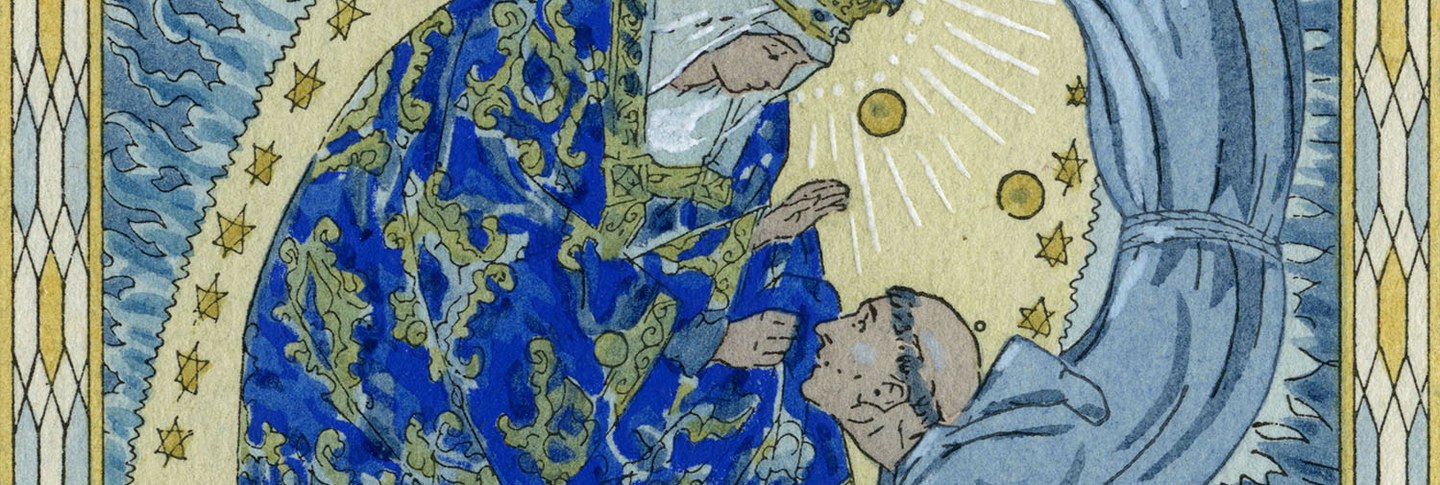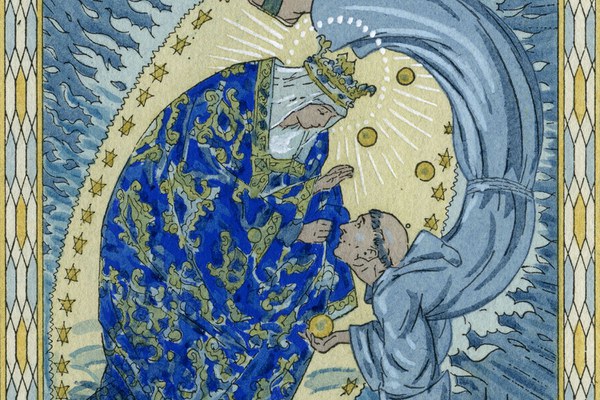The opening of Juggling the Middle Ages was celebrated with an opening lecture from Jan Ziolkowski, Arthur Kingsley Porter Professor of Medieval Latin at Harvard University and director of Dumbarton Oaks. Ziolkowski emphasized the connection between the mission of Dumbarton Oaks and the themes of the exhibition: the importance of cultural memory and the humanities in connecting past and present.
Ziolkowski traced the path of Le jongleur de Notre Dame or Our Lady’s Tumbler from the story’s first appearance in a 13th-century manuscript to its contemporary association with children’s literature and Christmas. Between then and now, the story was rediscovered in the 1870s and popularized by French intellectuals, as France was recovering from the humiliation of the Franco-Prussian War and seeking new ways of understanding and articulating “Frenchness.” The Song of Roland and the story of Joan of Arc were central to this understanding, but Le jongleur de Notre Dame, Ziolkowski noted, was a bit player in this search for national identity.
The story gained added life through adaptations in the late 19th and early 20th centuries, especially in a short story by Anatole France and an opera by Jules Massenet, alongside the Gothic revival that pervaded other media. Across the Atlantic, European immigrants to America sought to recapture something of the Old World they had left behind. The juggler had his role to play. Ziolkowski suggests that the “dizzying modernization” of the US led to the use of neo-Gothic design as a “means of controlling the unfamiliar and spiritualizing it,” offering a sense of security in a fast-changing world. This aesthetic reached far beyond architecture and into the American household, in the form of cathedral glass for bottling foodstuffs and ink, cathedral radios, Gothic bracket clocks, and stories that captured the perceived innocence and spirituality of the past, such as Our Lady’s Tumbler.
In the 1950s and 1960s, the story came to be associated with Christmastime. This connection is evident in R. O. Blechman’s The Juggler of Our Lady, which retold the medieval tale as a proto-graphic novel. In 1958 the book was made into an animated film, narrated by Boris Karloff. In the early 1950s a short reenactment of the story aired annually in Christmas episodes of The Fred Waring Show, a television variety show. In 1960, Tony Curtis, at the height of his celebrity, coproduced and starred in the telefilm The Young Juggler. In 1969, W. H. Auden published the poem “The Ballad of Barnaby,” illustrated by Edward Gorey, at Christmastime.
Over the past few decades, the story of the juggler has been found often in children’s literature. The most well-known version is now Tomie dePaola’s The Clown of God, originally published in 1978 and rereleased by Simon & Schuster this year. The Little Juggler by Barbara Cooney (1961), The Acrobat and the Angel by David and Mark Shannon (1999), The Little Jester by Helena Olofsson (2002), and Jakob der Gaukler by Max Bolliger, illustrated by Štěpán Zavřel, are all children’s stories based on that original medieval tale. Lest visitors to the exhibition wonder why they are hearing about this story for the first time, Ziolkowski noted in his presentation that one of the elements that drew him to the research topic is the “paradox of the story—it’s hidden in plain sight.”

